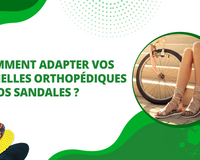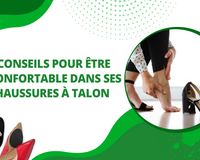
Generally speaking, the use of flat-foot orthopedic insoles, the wearing of adapted flat-foot orthopedic shoes and stretching exercises are the most preferred treatments for relieve pain flatfoot pain, as the flat-foot orthotics are designed to support your feet and keep your posture correct, helping to relieve flatfoot pain and prevent the worsening of flatfoot symptoms.
What is flatfoot?

Flatfoot is a medical condition in which the arch of the foot is collapsed, sometimes causing disabling flatfoot pain, leading in some cases to ankle and heel misalignment. However, people with flat feet can also experience postural problems and muscle weakness.
However, to relieve flatfoot pain and reduce the inflammation associated with flatfoot, fascia and arch massage may be necessary. It can also help improve flexibility and posture, and reduce stress on the joints and foot.
The different causes of flat foot

Most children are born with a flat foot, and it's usually after the age of 5 that this condition develops. plantar deformity resolves itself. Childhood flatfoot is therefore a normal and natural anomaly in children up to this age. However, there are many causes of flatfoot in adults, including :
Genetic factors, as valgus flatfoot can be congenital and pass from parents to children.
- Weakness of the arch of the foot
- Arthritis or rheumatoid arthritis
- After-effects of ankle or foot injury
- Rupture or dysfunction of the posterior tibial tendon
- Muscle or nervous system diseases, such as muscular dystrophy, cerebral palsy or spina bifida.
Flat feet - consequences

While flatfoot generally requires no treatment when it is asymptomatic, when it is associated with pain and is not directly treated by a doctor or foot specialist, it can lead to a number of complications, the most frequent of which are:
- Morton's Neuroma
- Plantar fasciitis
- Tendonitis
- Toe deformities: hammertoes or hallux valgus
- Chronic pain in hips, feet, ankles and knees
Flatfoot pain: what you need to know

Flatfoot knee pain
Flat feet can easily affect the alignment of a person's body when standing, walking or running. As a result, they can increase the likelihood of developing knee pain.
Heel pain
Because the arch of the foot collapses, causing the heel to shift inwards, resulting in a poor distribution of pressure on the ground, flat feet can also lead to intense heel pain.
❌ It can also lead to other dysfunctions such as plantar fasciitis and Achilles tendonitis.
Ankle pain
Collapse of the arch of the foot generally causes the axis of the ankle to deviate inwards. Instability is often the result. This poor posture also increases the risk of sprains and tendonitis.
Valgus flatfoot: general points to bear in mind
Valgus flat feet are a more advanced plantar condition than flat feet, especially when the pathology is left untreated. Thus, valgus flat feet become pathological when they are often associated with left foot flat pain and fatigue, as they can cause tension in the foot, muscle and ankle joints. The same applies to right-sided flatfoot pain.
What treatments are available to relieve flat feet?

Use of orthopedic insoles for flat feet
To get rid of flatfoot pain, it's important to consult a podiatrist or foot care professional so that he or she can prescribe an orthopedic insert. use of orthopedic insoles flat feet.
In fact, flat-foot insoles can be worn to relieve pain and inflammation under the ball of the foot. These orthopedic insoles help to reinforce shock absorption and correct points of support on the ground. In addition, the use of these insoles for flat feet can ensure better distribution of body weight, thus relieving flatfoot pain. You can find flat-foot insoles at your local chemist's.
As a reminder, a flat-footed insole can be worn inside standard shoes, however, to avoid the risk of a "flat foot". aggravation of the condition even if it cannot completely correct the deformity. Wearing flat-foot insoles inside shoes does, however, help to prevent and alleviate the pain caused by this pathology. But are there insoles for flatfoot pain on the outside? In any case, it's a nagging question.
Wearing flat-footed shoes
In addition to orthopedic insoles for flat feet, wearing flat-footed shoes is also highly recommended. However, if you suffer from pain in the flat of the foot, it's advisable to opt for a flat-foot shoe model that obviously offers sufficient space to avoid compression of your forefoot and toes. Flatfoot shoes come in a range of sizes.
❌ High-heeled shoes, pumps and sandals are not recommended.However, high heels, pumps and sandals are not recommended, as they offer inadequate support for the arch of the foot, which in turn can aggravate the symptoms of the condition.
Flatfoot physiotherapy sessions

In addition to wearing flatfoot shoes and the use of flat-foot insoles, there are also exercises and physiotherapy sessions that can help relieve flat-foot pain.
For example, to relieve flatfoot arch pain, massage with a tennis ball is prescribed to relax nerves and muscles, especially when this exercise is repeated at least three times a week for less than five minutes.
Flatfoot surgery: a last resort
Generally speaking, in the most extreme cases, i.e. when the above treatments have not yielded any fairly positive results, flatfoot surgery may be considered as a last resort, if foot pain also persists.
However, depending on the stage of progression of the pathology, the surgeon may perform two types of surgery:
- Conservative surgery, to maintain normal joint function.
- Non-conservative surgery, which is dedicated to the most severe forms of flatfoot. Its aim is to immobilize all or part of the joint using implants or screws.









